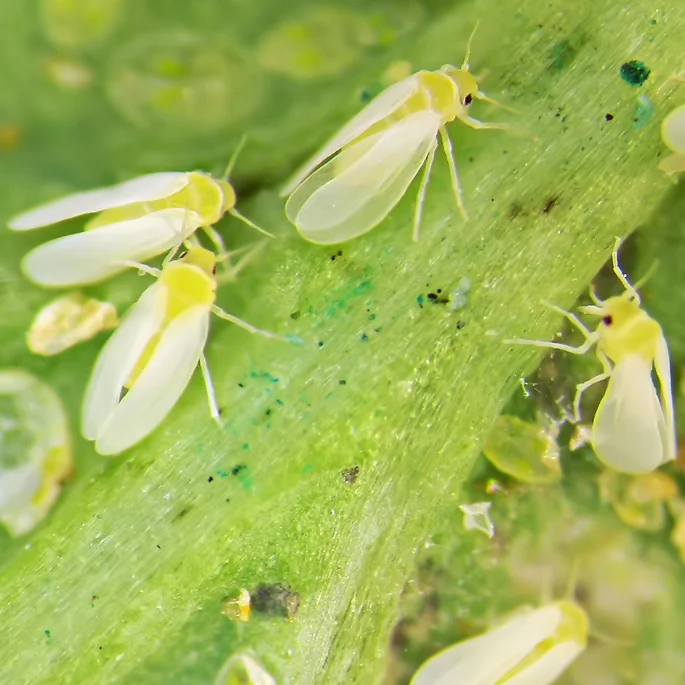Whitefly: Diagnosis, Harms and Natural Control Methods

The whitefly is a group of pests consisting of small insects that can cause serious damage to plants. This article will focus on the identification of whiteflies, the damage they cause to plants and natural control methods.
-
Recognition of White Flies: Whiteflies are usually found in small colonies of white insects under leaves or on plant stems. Adult whiteflies are about 1-2 mm long, white or yellowish in color, and have a scale-like appearance. It is generally easy to act on the plant due to their volatile nature.
-
Damages to Plants: Whiteflies feed on the leaves of plants by assimilation. As a result, the following damage may occur to plants:
- Yellowing of leaves: Feeding by whiteflies can cause yellowing and wilting of plant leaves.
- Lack of nutrient absorption: Intense whitefly attack can adversely affect the nutrient absorption of plants and result in growth retardation.
- Viral disease carrier: Whiteflies can also play a role in the spread of viral diseases in plants. Virus-carrying flies can feed on plants and transfer the virus to other plants.
- Natural Control Methods: It is possible to reduce the use of chemical pesticides by using natural control methods against whiteflies. Here are some effective natural remedies:
- Biological Control: Using natural enemies can be effective in keeping the whitefly population in check. For example, greenflies or parasitoid insects (eg Encarsia formosa) can be used to control whiteflies.
- Plant Diversity: Providing plant diversity can reduce the spread of whiteflies. Different plant species can limit the feeding and breeding range of whiteflies.
- Physical Control: When the whitefly population on plants reaches a certain level, it can be effective to physically remove the pests from the plant using water spray or vacuum.
- Prevention Strategies: The following prevention strategies can be applied to reduce the harms of whiteflies:
-
Traps: Whitefly traps are an effective tool for catching pests. Traps containing yellow or blue sticky leaves or artificial pheromones attract and trap whiteflies. This helps keep their populations under control and limits their spread.
-
Plant inspection: Before buying new plants or planting in your garden, carefully inspect plants and guard against the presence of whiteflies.
-
Hygienic practices: Reduce breeding grounds for whiteflies by regularly removing dead leaves or plant debris from plants.
-
Plant strengthening: Healthy and vigorous plants may be more resistant to whitefly attacks. Regular watering of plants, correct nutritional supplements and suitable growing conditions should be provided.
Minimizing whitefly attacks and maintaining plant health can be achieved through these prevention strategies. The use of natural and environmentally friendly methods, including traps, is important in maintaining ecosystem balance by reducing the use of chemical pesticides.
Conclusion:
Whiteflies are small insects that can cause serious damage to plants. In this article, the identification of whiteflies, the damage they cause to plants, natural control methods and the importance of traps were discussed. Whitefly can be effectively combated by using natural methods such as biological control methods, plant diversity, physical control and traps. By applying prevention strategies, it is possible to minimize whitefly attacks and protect plant health. This is an important step towards a sustainable farming practice.
